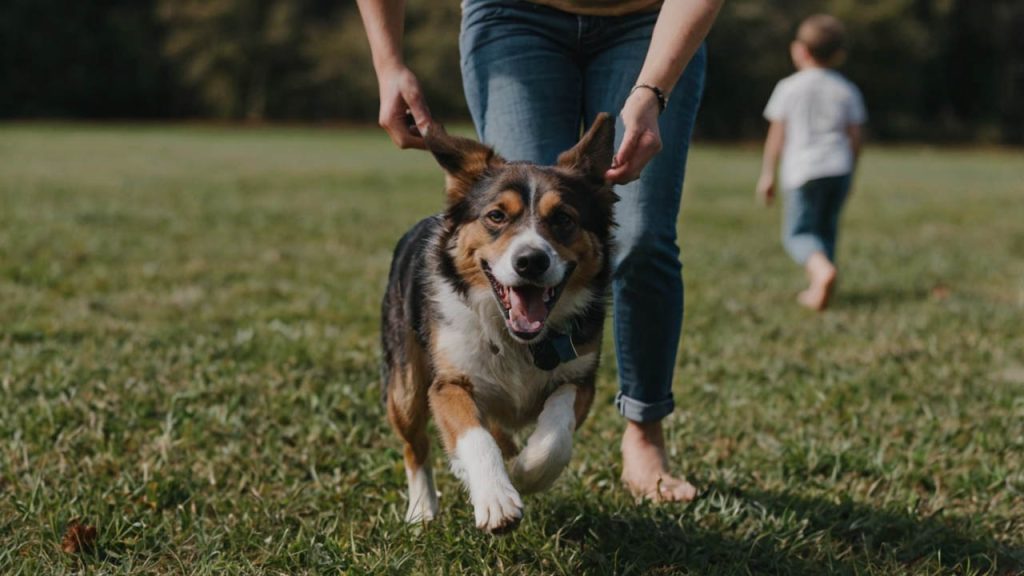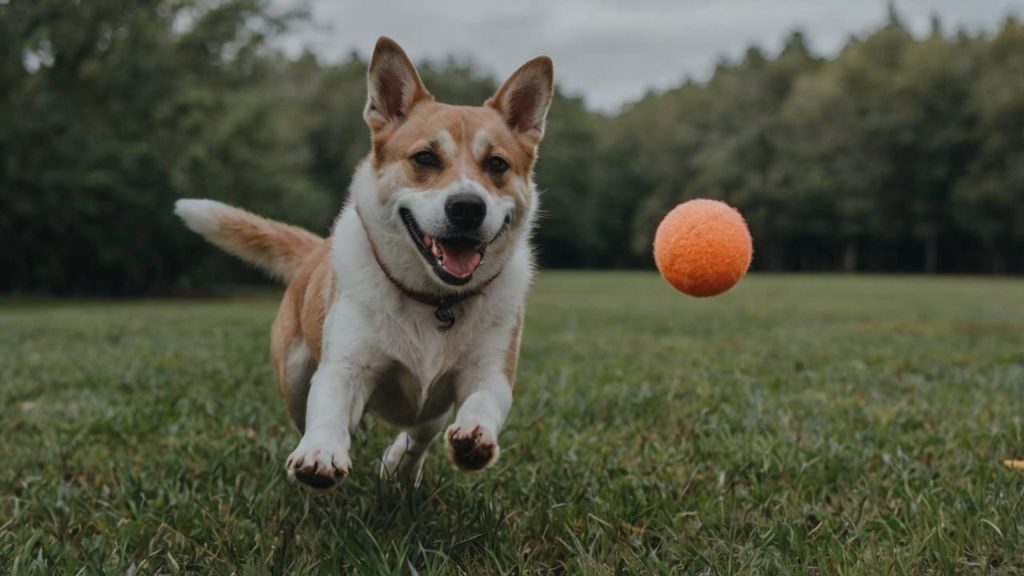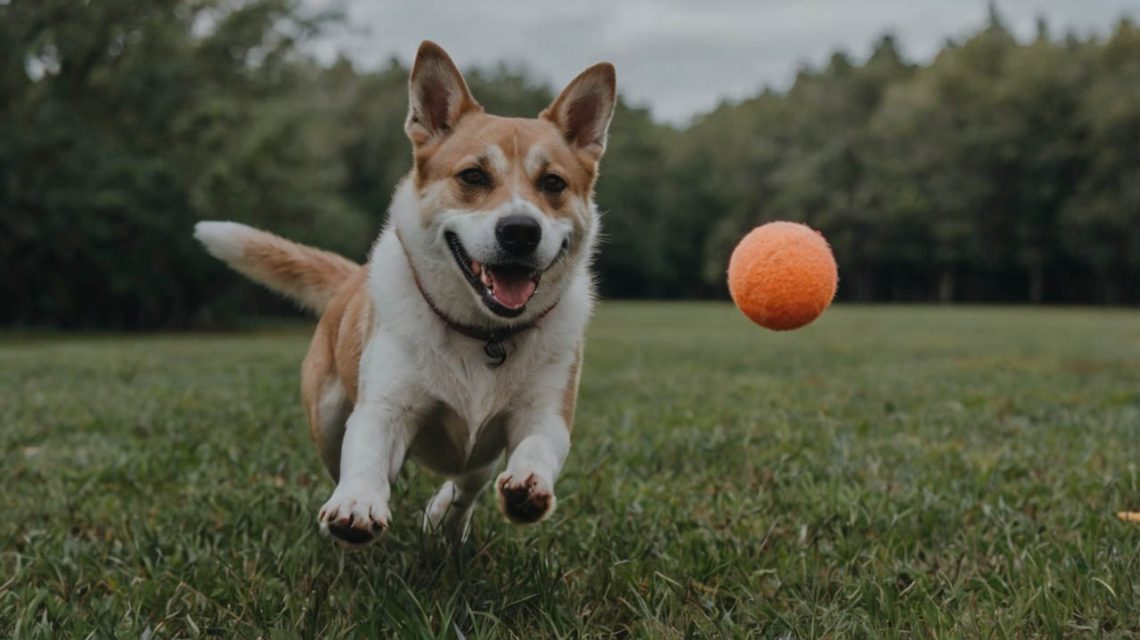For many dog owners, the perfect day involves a sunny park, a favorite ball, and a dog that joyfully retrieves it every time. However, the reality for some is a dog who stares blankly after the toss, or worse, instigates a frustrating game of keep-away. This is precisely why learning how to teach a dog to play fetch is a transformative skill for any pet parent. This isn’t just about teaching a fun trick; it’s a powerful method for providing essential exercise, mental enrichment, and, most importantly, deepening the incredible bond you share with your canine companion.
This definitive guide will walk you through a proven, story-like training plan that breaks the game down into simple, achievable steps. We will move from sparking initial interest in a toy all the way to a reliable, long-distance retrieve. Forget hoping your dog has a “natural instinct.” Instead, we will use positive reinforcement to build a love for the game from the ground up. Ultimately, mastering how to teach a dog to play fetch unlocks a new level of communication and teamwork between you and your dog.
The “Why”: The Deeper Benefits of Teaching a Dog to Play Fetch
Before we jump into the “how,” it is crucial to understand the profound benefits of this classic game. Fetch is a dynamic activity that engages your dog’s mind, body, and ancestral instincts in a structured, positive way.
- Exceptional Physical Exercise: A good game of fetch is a fantastic cardiovascular workout. It’s a highly efficient way to burn off excess energy, which can help prevent weight gain and reduce restlessness, especially for high-energy breeds.
- Vital Mental Stimulation: Fetch is a thinking game. It requires your dog to focus on the toy, mark its location, control the impulse to run before the throw, and follow a sequence of commands. This mental workout is just as important as physical exercise for preventing boredom and related behavioral issues like chewing or barking.
- Strengthens the Human-Canine Bond: Fetch is a partnership. When you successfully teach a dog to play fetch, you are building a system of communication and cooperation. Your dog learns that working with you leads to fun and rewards, which strengthens their trust and desire to engage with you in all other aspects of life. According to the animal behavior experts at VCA Animal Hospitals, interactive play like fetch is essential for a dog’s social and emotional health.

Setting the Stage: How to Prepare to Teach a Dog to Play Fetch
Success in dog training often comes down to preparation. Before you even think about the first throw, you need to create the perfect learning environment and choose the right tools for the job. This foundational work makes the entire process of learning how to teach a dog to play fetch smoother and more effective.
Choosing the Perfect Toy to Teach a Dog to Play Fetch
The toy you choose is the centerpiece of the game. If your dog isn’t motivated by it, the training will be an uphill battle.
- Identify High-Value Toys: What does your dog absolutely love? For some, it’s a classic tennis ball. For others, it might be a squeaky plush toy, a durable rubber ball like a Chuckit!, or a frisbee. Observe your dog and see what they naturally gravitate towards. Crucially, avoid using sticks, which can splinter and cause serious injuries to the mouth and throat.
- Create the “Fetch-Only” Toy: Select one or two of their favorite toys and designate them as “special” fetch toys. These toys only come out during training sessions and are put away immediately after. Consequently, this builds immense value and anticipation, signaling to your dog that a super fun game is about to begin.
Assembling Your Positive Reinforcement Toolkit
- High-Value Treats: Have a stash of small, soft, and incredibly tasty treats ready. These are for rewarding key behaviors, such as dropping the toy, and should be more exciting than their regular kibble.
- A Distraction-Free Environment: Start your training indoors. A long hallway or a large, clutter-free room is ideal. By minimizing distractions, you help your dog focus entirely on you, the toy, and the game.
The Core Steps for How to Teach a Dog to Play Fetch
Now, we’ll build the game of fetch piece by piece, like chapters in a story. Remember that patience and positivity are your greatest assets. Every dog learns at its own pace, so celebrate every small success with enthusiasm.
Step 1: Building Insane Toy Drive and Interest
You can’t teach fetch if the dog doesn’t want the toy. The first step is to make that designated fetch toy the most exciting object in your dog’s world.
- Introduce the Toy with Energy: Sit on the floor with your dog and reveal the special toy with a burst of excitement. Use a happy, high-pitched voice.
- Make the Toy “Alive”: Drag the toy on the ground, wiggle it, and move it away from your dog like prey. This taps into their natural predatory drive and makes the toy an object to be pursued.
- Reward Any Interaction: The moment your dog mouths, nudges, paws, or even looks at the toy with interest, praise them (“Yes! Good dog!”) and give them a treat. You are teaching them that engagement with this toy is highly rewarding.
Step 2: Mastering the Building Blocks: “Take It” and “Drop It”
Fetch isn’t one action; it’s a sequence. The two most critical commands in this sequence are taking the toy and, more importantly, giving it back.
Teaching a Solid “Drop It” Command
This is the secret to avoiding the keep-away game.
- The High-Value Trade: When your dog is holding the toy, present a delicious treat right in front of their nose. To take the treat, they will have to open their mouth and drop the toy.
- Add the Verbal Cue: The exact moment the toy falls from their mouth, say your cue word, “Drop it!”, in a clear, cheerful voice and give them the treat.
- Practice and Fade the Lure: Repeat this many times. Soon, your dog will start to anticipate the treat and drop the toy when they hear the cue. As they get better, you can start saying the cue first, and then rewarding them after they comply. For more in-depth guidance, the American Kennel Club (AKC) offers excellent resources on creating a reliable “drop it.”
Step 3: The First Retrieve: Perfecting the Indoor Game
With the foundations in place, it’s time for the first mini-retrieve.
- The Short Toss: In your quiet indoor space, sit with your dog and enthusiastically toss the toy just a few feet away. As you toss, use a consistent verbal cue like “Fetch!” or “Get it!”
- Encourage the Return: Your dog will likely go to the toy. As soon as they pick it up, become the most exciting thing in the room. Use a happy tone, pat your legs, and even back away a few steps to encourage them to come toward you.
- Cue and Reward the Drop: The moment they get back to you, use your “Drop it” command. When they release the toy, throw a mini-party with treats and praise. This positive reinforcement is key to how to teach a dog to play fetch successfully. Keep sessions short (5-10 minutes) and always end on a successful retrieve.

Advancing Your Skills: Taking Fetch to the Great Outdoors
Once your dog is a reliable indoor fetch champion, it’s time to take the game to the next level. The outdoors presents new challenges, like more space and more distractions.
- Choose Your Location Wisely: Start in a securely fenced area with minimal distractions, like your backyard. Avoid busy dog parks until your dog’s retrieve is rock-solid.
- Use a Long Training Lead: Initially, you can keep your dog on a long, lightweight leash (20-30 feet). This gives them the feeling of freedom while ensuring you have a way to prevent them from running off if they get distracted.
- Gradually Increase the Distance: Start with the same short tosses you practiced indoors. As your dog consistently succeeds, slowly increase the throwing distance. This gradual progression is the secret to building a long-distance retrieve.
Troubleshooting: How to Teach a Dog to Play Fetch When You Hit a Snag
Even the best training plans can encounter roadblocks. Here’s how to solve the most common fetch-related problems.
The Problem: My Dog Plays “Keep-Away” and Won’t Bring the Toy Back
This is the number one frustration for owners. It happens because the dog finds possessing the toy more rewarding than returning it.
- Solution: NEVER Chase Your Dog. Chasing reinforces the game you’re trying to stop. Instead, run in the opposite direction, calling your dog’s name in a playful, encouraging tone. This often triggers their chase instinct, and they’ll run to you with the toy.
- Solution: The Two-Toy Method. Have two identical, high-value toys. When your dog returns with the first one, show them the second toy and act incredibly excited about it. When they drop the first toy to get the new, exciting one, say “Drop it!” and throw the second toy. This teaches them that giving a toy back makes another throw happen.
The Problem: My Dog Loses Interest or Gets Easily Distracted
An outdoor environment can be overwhelming for some dogs.
- Solution: Amp Up the Reward and Keep Sessions Short. Make the game faster, more exciting, and use higher-value rewards than the distractions. Furthermore, keep training sessions very brief (5-7 minutes) to end the game while your dog is still engaged and wanting more. This is a critical strategy for how to teach a dog to play fetch effectively.
The process to teach a dog to play fetch is more than just a training exercise; it is a shared journey. Each successful retrieve strengthens your communication and deepens your bond. You are building a language of play that will enrich both of your lives for years to come.
Ready to become your dog’s favorite playmate? Grab that special toy, pocket some treats, and start your fetch journey today. Let us know how it goes in the comments below! For more ways to engage your dog’s mind, explore Fun Indoor Games for Dogs – Top 10 Ideas.


